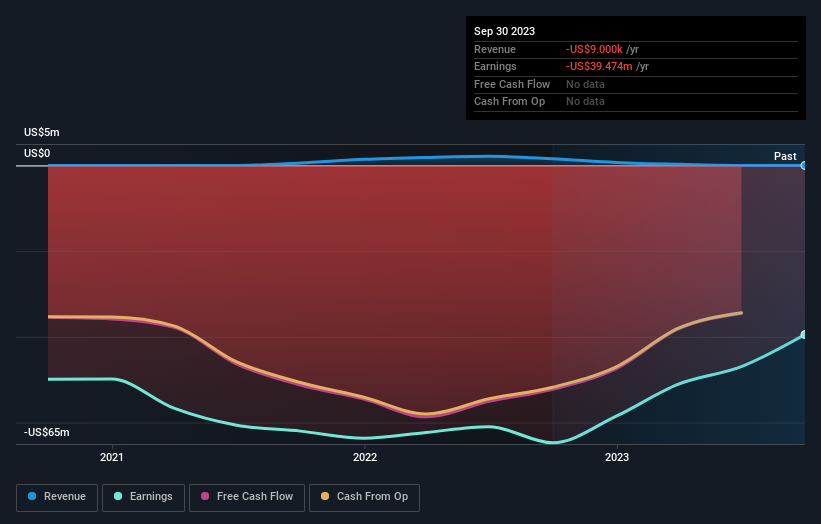- United States
- /
- Medical Equipment
- /
- NasdaqCM:PLSE
The recent 38% gain must have brightened Top Key Executive Robert Duggan's week, Pulse Biosciences, Inc.'s (NASDAQ:PLSE) most bullish insider

Key Insights
- Significant insider control over Pulse Biosciences implies vested interests in company growth
- Robert Duggan owns 66% of the company
- Using data from company's past performance alongside ownership research, one can better assess the future performance of a company
A look at the shareholders of Pulse Biosciences, Inc. (NASDAQ:PLSE) can tell us which group is most powerful. We can see that individual insiders own the lion's share in the company with 68% ownership. That is, the group stands to benefit the most if the stock rises (or lose the most if there is a downturn).
Clearly, insiders benefitted the most after the company's market cap rose by US$97m last week.
Let's take a closer look to see what the different types of shareholders can tell us about Pulse Biosciences.
Check out our latest analysis for Pulse Biosciences

What Does The Institutional Ownership Tell Us About Pulse Biosciences?
Many institutions measure their performance against an index that approximates the local market. So they usually pay more attention to companies that are included in major indices.
Pulse Biosciences already has institutions on the share registry. Indeed, they own a respectable stake in the company. This implies the analysts working for those institutions have looked at the stock and they like it. But just like anyone else, they could be wrong. If multiple institutions change their view on a stock at the same time, you could see the share price drop fast. It's therefore worth looking at Pulse Biosciences' earnings history below. Of course, the future is what really matters.

Pulse Biosciences is not owned by hedge funds. Our data suggests that Robert Duggan, who is also the company's Top Key Executive, holds the most number of shares at 66%. When an insider holds a sizeable amount of a company's stock, investors consider it as a positive sign because it suggests that insiders are willing to have their wealth tied up in the future of the company. In comparison, the second and third largest shareholders hold about 1.7% and 1.4% of the stock.
Researching institutional ownership is a good way to gauge and filter a stock's expected performance. The same can be achieved by studying analyst sentiments. We're not picking up on any analyst coverage of the stock at the moment, so the company is unlikely to be widely held.
Insider Ownership Of Pulse Biosciences
The definition of an insider can differ slightly between different countries, but members of the board of directors always count. Company management run the business, but the CEO will answer to the board, even if he or she is a member of it.
Insider ownership is positive when it signals leadership are thinking like the true owners of the company. However, high insider ownership can also give immense power to a small group within the company. This can be negative in some circumstances.
Our most recent data indicates that insiders own the majority of Pulse Biosciences, Inc.. This means they can collectively make decisions for the company. So they have a US$216m stake in this US$320m business. Most would be pleased to see the board is investing alongside them. You may wish todiscover (for free) if they have been buying or selling.
General Public Ownership
The general public, who are usually individual investors, hold a 24% stake in Pulse Biosciences. While this group can't necessarily call the shots, it can certainly have a real influence on how the company is run.
Next Steps:
It's always worth thinking about the different groups who own shares in a company. But to understand Pulse Biosciences better, we need to consider many other factors. Take risks for example - Pulse Biosciences has 4 warning signs (and 2 which can't be ignored) we think you should know about.
If you would prefer check out another company -- one with potentially superior financials -- then do not miss this free list of interesting companies, backed by strong financial data.
NB: Figures in this article are calculated using data from the last twelve months, which refer to the 12-month period ending on the last date of the month the financial statement is dated. This may not be consistent with full year annual report figures.
New: Manage All Your Stock Portfolios in One Place
We've created the ultimate portfolio companion for stock investors, and it's free.
• Connect an unlimited number of Portfolios and see your total in one currency
• Be alerted to new Warning Signs or Risks via email or mobile
• Track the Fair Value of your stocks
Have feedback on this article? Concerned about the content? Get in touch with us directly. Alternatively, email editorial-team (at) simplywallst.com.
This article by Simply Wall St is general in nature. We provide commentary based on historical data and analyst forecasts only using an unbiased methodology and our articles are not intended to be financial advice. It does not constitute a recommendation to buy or sell any stock, and does not take account of your objectives, or your financial situation. We aim to bring you long-term focused analysis driven by fundamental data. Note that our analysis may not factor in the latest price-sensitive company announcements or qualitative material. Simply Wall St has no position in any stocks mentioned.
About NasdaqCM:PLSE
Flawless balance sheet low.


